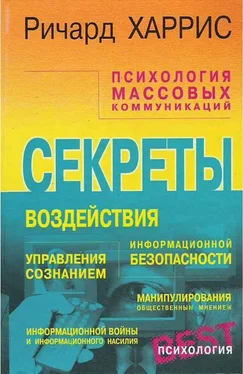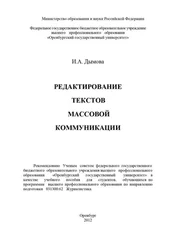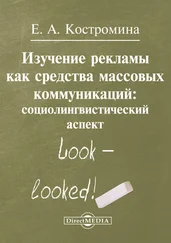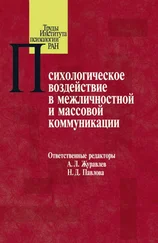Phillips, D. P. (1984). Teenage and adult temporal fluctuations in suicide and auto fatalities. In: H. S. Sudak, A. B. Ford, N. B. Rushforth (Eds.). Suicide in the young (p. 69–80). Boston: John Wright.
Phillips, D. P, Curstenscn. L. L. (1986). Clustering of teenage suicides after TV news stories about suicides. New England Journal of Medicine. 315. 685–689.
Phillips, K. (1993, January-February). How Seventeen undermines young women. Extra.', 6( I). 14.
Picard, R. G. wav). Media portrayals of terrorism: Functions and meaning of news coverage. Ames, IA: Iowa State University Press.
Pierce. M. C., Harris, R. J. (1993). The effect of provocation, race, and injury description on men's and women's perception of a wife-battering incident. Journal of Applied Social Psychology, 23. 767–790.
Pingree, S.. Thompson, M. E. (1990). The family in daytime serials. In: J. Bryant (Ed.). Television and the American family (p. 113–127). Hillsdale, NJ: Lawrence Eribaum Associates.
Pilkanen-Pulkkinen, L. (1981). Concurrent and predictive validity of self-reported aggressiveness. Aggressive Behavior, 7, 97–110.
Ploghoft. M. E., Anderson, J.A. (1982). Teaching critical television viewing skills: An integrated approach. Springfield, IL: Charles C. Thomas.
Pollitt, K. (1991, June 24). Naming and blaming: Media goes wilding in Palm Beach. The Nation.
Postman, N. (1982). The disappearance uf childhood. New York: Delacortc.
Postman, N. (1985). Amusing ourselves to death. New York: Viking Penguin.
Potter, W. J. (1986). Perceived reality and the cultivation hypothesis. Journal of Broadcasting Electronic Media, 30, 159–174.
Potter, W. J. (1988). Perceived reality in television effects research. Journal of Broadcasting Electronic Media, 32, 23–41.
Potter, W. J. (1989). Three strategies for elaborating the cultivation hypothesis. Journalism Quarterly, 65. 930–939.
Potter, W. J. (1991 a). Examining cultivation from a psychological perspective: Component subprocesses. Commun/co/fon/?eseore/i, 18. 77–102.
Potter, W. J. (1991 b). The relationships between first-and second-order measures of cultivation. Human Communication Research, 18, 92–113.
Potter, W. J. (1993). Cultivation theory and research: A conceptual critique. Human Communication Research, 19,564–601.
Potter, W. J. (1998). Media literacy. Thousand Oaks, CA: Sage.
Powers, R. (1984). Supertube: The rise of television sports. New York: Coward-McCann.
Pratap, A. (1990, August 13). Romance and a little rape. Time, 69.
Pratkanis, A. R. (1992). The cargo-cult science of subliminal persuasion. Skeptical Inquirer, 16, 260–272.
Pratkanis, A. R., Aronson, E. (1992). Age of propaganda: The everyday use and abuse of persuasion. New York: W. H. Freeman.
Pratkanis, A. R., Greenwald, A. G. (1988). Recent perspectives on unconscious processing: Still no marketing applications. Psychology Marketing, 5, 339–355.
Preston, E. H. (1990). Pornography and the construction of gender. In: N. Signorielli M. Morgan (Eds.). Cultivation analysis (p. 107–122). Newbury Park, CA: Sage.
Preston, I. L. (1975). The great American blow-up: Puffery in advertising and selling. Madison: University of Wisconsin Press.
Preston, I. L. (1994). The tangled web they weave: Truth, falsity, advertisers. Madison: University of Wisconsin Press.
Preston, I. L., Richards, J. J. (1986). Consumer miscomprehension as a challenge to FTC prosecutions of deceptive advertising. The John Marshall Law Review, 19, 605–635.
Price, M. E. (Ed.). (1998). The V-chip debate: Content filtering from television to the Internet. Mahwah, NJ: Lawrence Eribaum Associates.
Price, V, Czilli, E. J. (1996). Modeling patterns of news recognition and recall. Journal of Communication, 46(2), 55–78.
Pritchard, D., Hughes, K. D. (1997). Patterns of deviance in crime news. Journal of Communication, 47(3), 49–67.
Protlas, J. M. (1983). Encouraging altruism: Public attitudes and the marketing of organ donation. Health and Society, 61(2), 278–306.
Provenzo, E. F, Jr. (1991). Video kinds: Making sense of Nintendo. Cambridge, MA: Harvard University Press.
Quinsey, V. L., Marshall, W. (1983). Procedures for reducing inappropriate sexual arousal: An evaluation review. In: J. G. Greer I. Stuart (Eds.). The sexual aggressor: Current perspectives on treatment. New York: Van Nostrand Reinhold.
Rabinovitch, M. S., McLean, M. S., Markham, J. W, Talbott, A. D. (1972). Children's violence perception as a function of television violence. In: G. A. Comstock, E. A.
Rubinstein, J. P. Murray (Eds.). Television and social behavior: Vol. 5. Television's effects: Further explorations. Washington, DC: U. S. Government Printing Office.
Rader, B. G. (1984). In its own image: How television has transformed sports. New York: The Free Press.
Rafaeli, S., LaRose, R. J. (1993). Electronic bulletin boards and "public goods" explanations of collaborative mass media. Communication Research, 20, 277–297.
Rainville, R., McCormick, E. (1977). Extent of covert racial prejudice in pro football announcers' speech. Journalism Quarterly, 54(1), 20–26.
Raju, P. S.. Lonial, S. C. (1990). Advertising to children: Findings and implications. Current Issues and Research in Advertising, 12, 231–274.
Ratzan, S. C., Payne, J. G., Massett, H. A. (1994). Effective health message design: The America Responds to AIDS campaign. American Behavioral Scientist, 38, 294–309.
Read, W. H. (1976). America's mass media merchants. Baltimore: The Johns Hopkins University Press.
Real, M. R. (1989). Super Bowl football versus World Cup soccer: A cultural-structural comparison. In: L. A. Wenner (Ed.). Media, spans, and society (p. 180–203). Newbury Park, CA: Sage.
Reeve, D. K., Agglcton, J. P. (1998). On the specificity of expert knowledge about a soap opera: An everyday story of farming folk. Applied Cognitive Psychology, 12, 35–42.
Reeves, B. (1989). Theories about news and theories about cognition: Arguments for a more radical separation. American Behavioral Scientist. 33, 191–197.
Reeves. В ., Nass, C. (1996). The media equation: How people treat computer, television, and the new media like real people and places. New York: Cambridge University Press.
Reeves, В ., Thorson, E., Rothschild, M., McDonald, D., Hirsch, J., Goldstcin, R. (1985). Attention to television: Intrastimulus effects of movement and scene changes on alpha variation over time. International Journal of Neuroscience. 25, 241–255.
Reid, R. T. (1979). Racial stereotyping on television: A comparison of the behavior of black and white television characters. Journal of Applied Psychology, 64(5), 465–489.
Report of the Special Committee on Pornography and Prostitution (Vol. I). (1985). Ottawa, ON, Canada: Minister of Supply and Services.
Rice, M. L, Huston, A.C., Truglio. R., Wright, J. C. (1990). Words from Sesame Street: Learning vocabulary skills while viewing. Developmental Psychology, 26, 421–428.
Rice, M. L., Huston. A. C., Wright, J. C. (1986). Replays as repetitions: Young children's interpretation of television forms. Journal of Applied Developmental Psychology, 7, 61–76.
Rich, F. (1997. December 26). Mental illness still needs a spokesman. Manhattan Mercury, p. A7.
Richards, J. I. (1990). Deceptive advertising. Hillsdale, NJ: Lawrence Eribaum Associates.
Riggs, M. (Director). (1992, June 15). Color adjustment. New York: Public Broadcasting Service.
Ritchie, D., Price, V. Roberts. D. F. (1987). Reading and television: A longitudinal investigation of the displacement hypothesis. Communication Research, 14, 292–315.
Roberts. D. R, Maccoby, N. (1985). Effects of mass communication. In: G. Lindzey E. Aronson (Eds.). Handbook of social psychology (3rd ed.). New York: Random House.
Читать дальше












